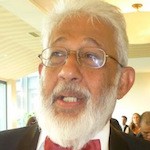Christmas Past, Present & Future

I must not discount my mother’s influence; she was a choir singing, church going Christian; I still have a maybe 100-year-old Bible annotated by my mother and grandmother. But it was not her formal religiosity, not ‘Churchianity’ that rubbed off. I comprehended later, as an adult, that it was her goodness, caring for others, and concern for waifs and strays in our neighbourhood that must gave coloured me sublimely. I think it lubricated an interest in social fairness, socialism and suspicion of Adam Smith’s invisible hand. If you get what I am driving at, you get it; if you don’t, you won’t.
Call me heathen, nonbeliever, infidel or what you will, but I have always been besotted with Christmas. In childhood it filled me with joy and anticipation; in later life, and still, I adore carols and carol service (I am willing to put up with the sermon and keep awake unless it’s too long); I wallow in family reunions and their warmth, smiles and company. Don’t get me wrong, it’s not bombast, eating, drinking and getting slightly pissed. There’s more to it than that, much more, but at the same time it’s not religious fellowship – for others it is. Though I am not religious, Christmas was never Ebenezer’s “humbug” to me. Again, if you get what I am driving at, you get it; I am not poet enough to put it any better. Christmas is the light in the eyes of a child, but “the child is father of the man” quipped Wordsworth. Now do you get it?
The formula Christmas “past”, “present” and future are, of course, pinched from Dickens. A Christmas Carol does not compete for the accolade of his greatest work – that spot belongs to Great Expectations – nor is it his bestselling, which is A Tale of Two Cities. At 200 million copies it is the second bestselling novel of all time – only Don Quixote, which has never been out of print has sold more – but A Christmas Carol with its soft undertones of Tiny Tim’s life-threatening illness, Marley’s ghost and its sentimental ending, is many people’s favourite Dickens.
So far, I’ve said a word or two about Christmas past and present. That was a feint to steer you to where I want, Christmas future; or to be honest the future of religious movements as social forces. Religious movements, genuine or fake, have always been drivers of social and global change. In the Seventh Century, Islam swept out of the Arabian Peninsula to make, within 100 years, the swiftest territorial conquests seen till then. Three hundred years later Pope Urban II fired off the first crusade to recover the Holy Land and unearth the Holy Grail – the chalice of the Last Supper – and sank Europe and the Near East in two hundred years of chaos and misery with nothing to show at the end. The intellectual stimulus of Luther and the Church of England was indispensable nourishment for the rise of capitalism in the Sixteenth Century. (Henry VIII’s concupiscence was a footnote). And of course, Cortez and Pizzaro led the way into the heart of central and south America with Bible laden men of the cloth in tow in an endeavour which eliminated 200 million people.
Still, I suggest that the impact of religion on social and global affairs is at a peak now. My reason for making this claim is that not one but five religious epidemics are in full flood. The starkest, in modern times, is Islamic jihadism, fundamentalism, ISIS, Taliban, Al Qaeda and cohorts of such forces, dominant from The Maghreb to Kabul to Indonesia. This assortment constitutes the most powerful politico-religious wave today. But there are two localised virulent religious outbreaks as well; Buddhist extremism in Burma and India’s Hindutva mobs. They may be localised to a country but their destructive effects are execrable.
There are two more religious influences gathering momentum. Evangelical Christianity is growing swiftly worldwide and frightening the pants (cassocks) off established churches in many places. Brazil was Catholicism’s reserved patch; now about a quarter of its Christians are card-carrying evangelicals. In South Korea only 40% admit to having a religion, but a half of these are Evangelicals and Born-Agains.

